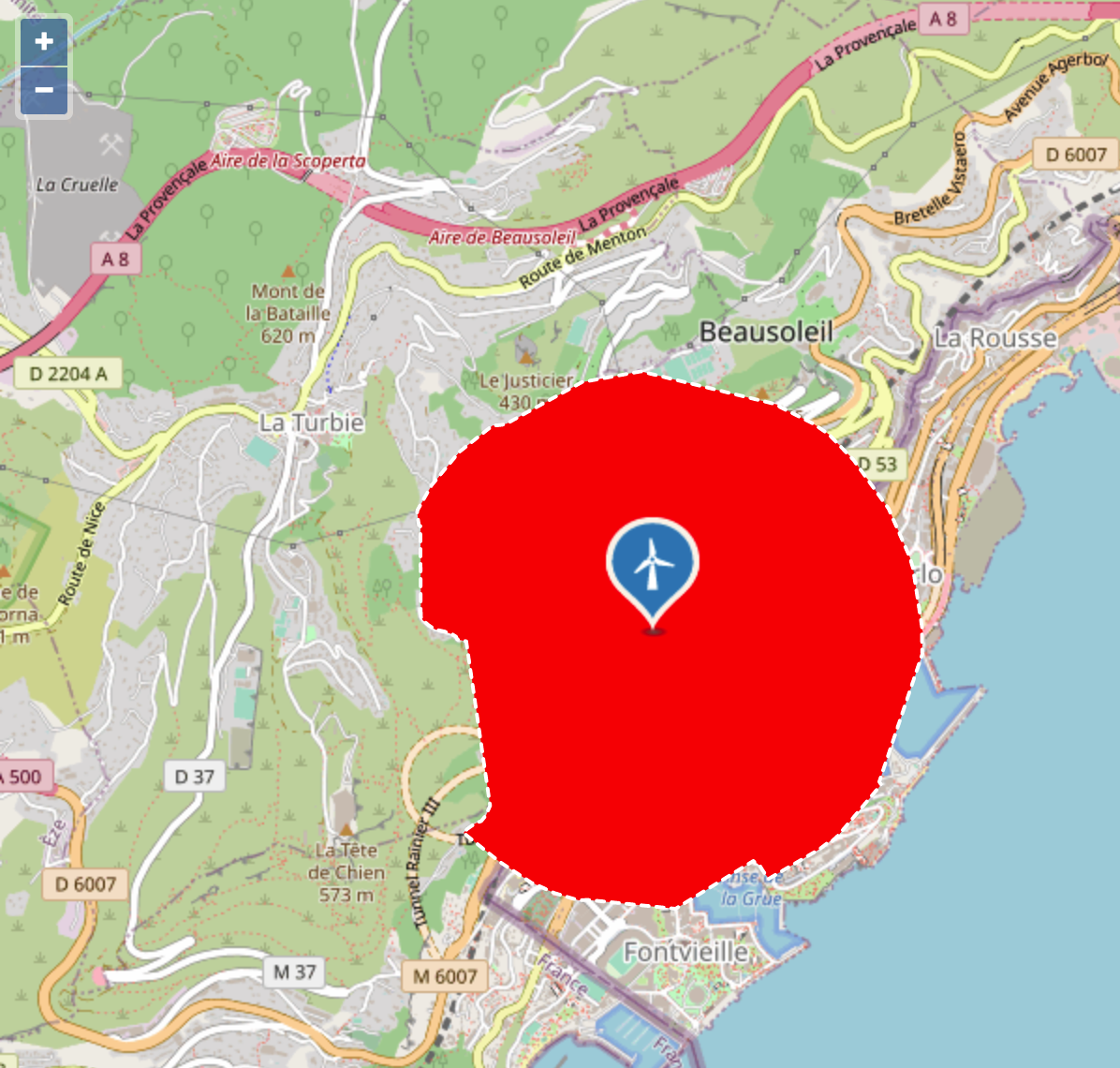# 示例:服务范围计算
通过指定起点,计算从该点出发可以到达的服务范围(到达圈)。
# 1. 搭建页面框架
首先我们创建一个名为 network-service-area.html 的页面,这里我们引入 OpenLayers,在页面上显示一个地图组件,并加载一个开放底图:
<!DOCTYPE html>
<html>
<meta charset="utf-8">
<head>
<link rel="stylesheet" href="https://cdn.jsdelivr.net/gh/openlayers/openlayers.github.io@master/en/v6.5.0/css/ol.css" type="text/css">
<script src="https://cdn.jsdelivr.net/gh/openlayers/openlayers.github.io@master/en/v6.5.0/build/ol.js"></script>
<script src="https://cdn.jsdelivr.net/npm/vue@2"></script>
</head>
<body>
<div id="app">
<div id="map" style="width: 600px; height: 600px"></div>
</div>
<script>
var app = new Vue({
el: '#app',
data: {
map: null,
markerLayer: null,
markerStyle: null,
resultLayer: null,
},
mounted: function() {
this.markerLayer = new ol.layer.Vector({
source: new ol.source.Vector(),
});
this.markerStyle = new ol.style.Style({
image: new ol.style.Icon({
anchor: [0.5, 1.0],
src: '../../../../assets/guide/icon-pin.png',
}),
});
this.resultLayer = new ol.layer.Vector({
source: new ol.source.Vector(),
});
this.map = new ol.Map({
target: 'map',
layers: [
new ol.layer.Tile({
source: new ol.source.OSM(),
}),
this.resultLayer,
this.markerLayer,
],
view: new ol.View({
center: ol.proj.fromLonLat([7.4126, 43.7407]),
zoom: 14,
}),
});
}
});
</script>
</body>
</html>
# 2. 响应鼠标点击事件
然后,我们在鼠标点击的时候,在地图上添加代表位置的图标。每次点击都会清除原有的坐标点和结果:
this.map.on('click', function(evt) {
const markerSource = this.markerLayer.getSource();
markerSource.clear();
const resultSource = this.resultLayer.getSource();
resultSource.clear();
const { coordinate } = evt;
const feature = new ol.Feature({
geometry: new ol.geom.Point(coordinate),
});
feature.setStyle(this.markerStyle);
markerSource.addFeature(feature);
}.bind(this));
这时,页面会随着鼠标点击,会显示点击的位置。
# 3. 计算从该点出发的到达圈
调用 API 计算这个点的服务范围,将鼠标点击的坐标传入point参数,同时指定通过distance参数来指定服务距离。注意,一般情况下还需要通过sr参数设置地图的坐标系以匹配坐标的格式:
fetch('http://localhost:9000/heycloud/api/routing/network/sample/serviceArea', {
method: 'POST',
mode: 'cors',
headers: {
'content-type': 'application/json',
},
body: JSON.stringify({
'point': coordinate,
'sr': 'web-mercator',
'distance': 1000,
'concavity': 1,
}),
})
.then(resp => resp.json())
.then(resp => {
const { hull } = resp.result;
});
在 API 调用结果中,我们能够得到计算后的到达圈hull。然后,我们可以将结果显示到地图上:
const hullStyle = new ol.style.Style({
stroke: new ol.style.Stroke({
color: '#fff',
lineDash: [4, 4],
width: 2,
}),
fill: new ol.style.Fill({
color: '#f00',
}),
});
const feature = new ol.format.GeoJSON().readFeature(hull);
feature.setStyle(hullStyle);
resultSource.addFeature(feature);
这样地图会显示如下的效果:

# 4. 设置到达圈的凹凸度
在请求计算的时候,还有一个concavity参数可以用于设置最后生成结果的凹凸程度,这个参数可以影响从离散的道路节点生成到达范围这个过程中,生成形状的凸出程度。这个参数的默认值为 1 ,下面我们看一下分别设置为 2、10 时候的效果:


← 示例:最快路线计算 示例:在客户端渲染底图 →
